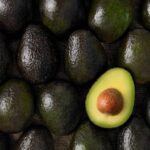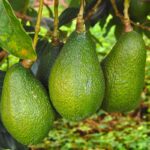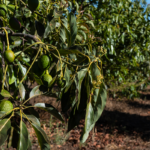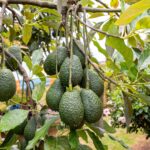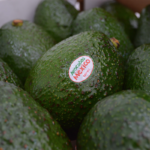Avocados in Charts: Market jumps US$5 in one week on California shortfall

In this week's ‘In Charts' installment, Luis Aragón of data visualization tool Agronometrics illustrates how the U.S. market is evolving. Each week the article will look at a different horticultural commodity, focusing on a specific origin or topic to see what factors are driving change.
Avocados are always uniquely interesting. Fun-fact: the name ahuacatl comes from Mexico’s indigenous Nahuatl language chiefly spoken by the Aztecs and it means testicle - an allusion to the seed’s shape.
When it comes to avocados and unlike Mexico’s pretty consistent year-round season, our typical California harvesting season ranges from approximately February through September.
However, a closer look at California’s shipments for the past few weeks highlights how 2019 has been somewhat of an outlier when compared to the previous four years. From the start of this year up to last week, we have seen California shipments add up to only 7% of the volume for that same time period back in 2018.
Origin: California, Avocado, Non-Organic, Historic Weekly Volumes
ZOOM IN: First 10 weeks
(Source: USDA Market News via Agronometrics)
[Agronometrics users can view this chart with live updates here]
Origin: California, Avocado, Non-Organic, Historic Weekly Volumes
BIG PICTURE: 2015 to 2019
(Source: USDA Market News via Agronometrics)
[Agronometrics users can view this chart with live updates here]
This remarkable gap comes from two facts: firstly, the present year is technically an off-year for alternate bearing California avocado trees. Secondly, and as the president of California’s Avocado Commission, Tom Bellamore, acknowledged earlier this month: “We have a somewhat smaller crop this year,”. He adds: “We had a pretty good side crop last year. So we’ll be smaller this year, but growers are hopeful that market conditions will be strong and good and we’ll have a good shipping season.”
As explained by Colin Fain of Agronometrics in his piece in early February, when we observe what prices were doing around the Super Bowl, we notice that at around US$25 they seem to be oddly following the path of 2016 more than any other of the past four years.
Hass Avocado, Non-Organic, Historic Weekly Prices
(Source: USDA Market News via Agronometrics)
[Agronometrics users can view this chart with live updates here]
In a similar fashion, when we look at avocados coming from all origins in 2018, the role of Mexico with its roughly 76% of market share really jumps out. Thus, it should not be a surprise that Mexico’s shipments seem to also be following rather closely the 2015-16 season’s path. Based on this, one would venture to expect a similar behavior insofar as Mexican shipments for the coming weeks and perhaps months. However, and as the charts below show, we have seen price increases over the last couple of weeks, which do seem to reflect the delayed Californian harvest, and this is all gravitating towards what will be an interesting May 5th… sometimes referred to as “Cinco de Mayo”.
Origin: Mexico, Avocado Non-Organic, Historic Weekly Shipments
(Source: USDA Market News via Agronometrics)
[Agronometrics users can view this chart with live updates here]
Notwithstanding, the harvest is bound to start soon for California and it comes in good timing for markets. During February we saw Mexican avocados flooding the market, thus depressing prices, after the notorious labor strike ended as shown in the chart below.
Hass Avocado, Non-Organic Prices and Volumes
(Source: USDA Market News via Agronometrics)
[Agronometrics users can view this chart with live updates here]
However, all that product has cycled so Californian producers are hopeful that markets will be hungrier for their fruits. Given Mexico’s dominance of this commodity, it is worth for Californian suppliers to pay close attention to what else is happening with their southern neighbor. Along these lines, it is worth noting that Mexico’s Holy Week (aka its Easter) could add some more volatility down the road.
This holiday is significant across Mexico, and much like the U.S. during Thanksgiving, the country takes time off for at least four days. Because Easter follows a lunar cycle, it lands on different dates every year, and for 2019 it will fall on April 21 (week 17), closer to Cinco de Mayo than the previous eight years (in 2011 we had it on April 24). As one might correctly guess, Cinco de Mayo (which falls around week 18), is the second-largest holiday where avocados are consumed - after the Super Bowl. With Easter in Mexico so close, it may be the opportunity to enter the market that California has been looking for.
Hass Avocado, Non-Organic Shipments around Cinco de Mayo
ZOOM IN: Week 15 to 20
(Source: USDA Market News via Agronometrics)
[Agronometrics users can view this chart with live updates here]
Finally, here's a snapshot of prices, by sizes, for the previous six weeks indicate a no-so-subtle upward trend
Hass Avocado, Non-Organic, Daily Prices by Size
(Source: USDA Market News via Agronometrics)
[Agronometrics users can view this chart with live updates here]
In our ‘In Charts’ series, we work to tell some of the stories that are moving the industry. Feel free to take a look at the other articles by clicking here.
You can keep track of the markets daily through Agronometrics, a data visualization tool built to help the industry make sense of the huge amounts of data that professionals need to access to make informed decisions. If you found the information and the charts from this article useful, feel free to visit us at www.agronometrics.com where you can easily access these same graphs, or explore the other 23 fruits we currently track.























